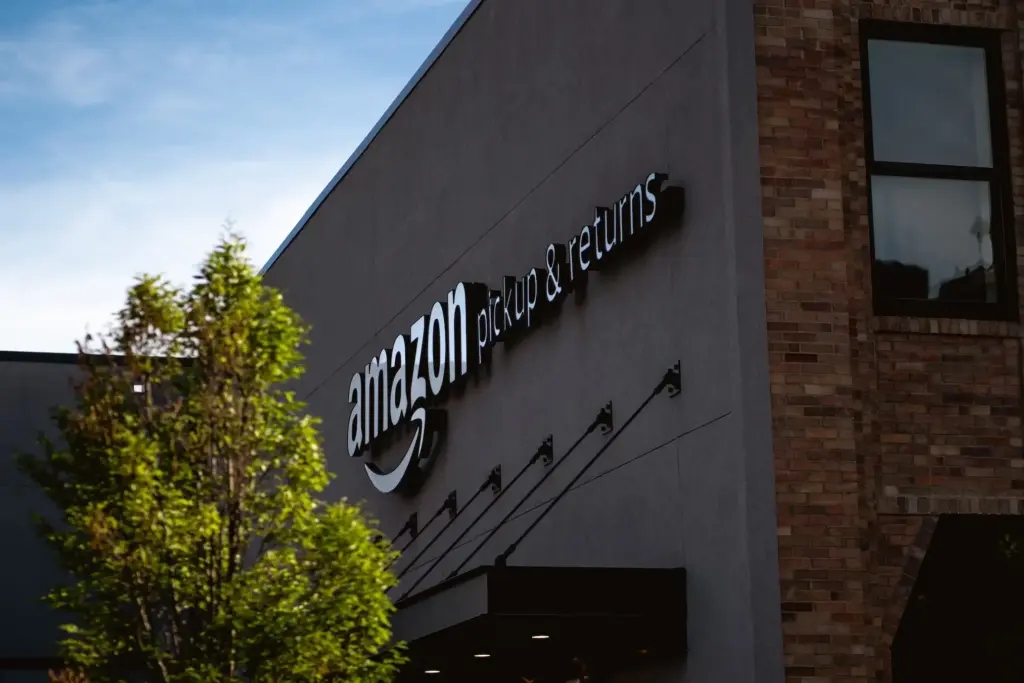Would you prefer higher profit margins with more moving pieces and aspects to maintain, or a steady stream of income with most of the logistics taken care of and lower margins?
This is the question many Amazon sellers face when deciding how to sell on the marketplace. Although opening an Amazon store is a no-brainer for e-commerce entrepreneurs (the marketplace generated almost $514 billion worldwide in 2022), your approach to it determines how lucrative your online business can be.
In this article, we’ll discuss the differences between selling first-party on Amazon (also known as 1P) versus as a third-party, or 3P, seller. You’ll learn the pros and cons of each option so you can clearly decide which is best for your business.
What Is 1P Selling on Amazon?
With 1P selling, you sell your goods in bulk directly to Amazon at wholesale costs. Amazon then takes care of creating your product listings and may sell them white label under their own brand (such as Amazon Basics).
This option allows you to sell in bulk without having to worry about listing optimization, logistics, returns, and all of the other aspects that go into making and fulfilling a sale. However, the trade-off for this easier business management is lower profits, as merchants typically need to offer bulk and wholesale pricing.
In addition, you lose much of the control over your brand. For example, you can’t choose whether your product is described as a purse or a bag — it’ll likely depend on which term has a higher chance of securing a sale.
You also won’t be able to set the final retail price for your items. This may become an issue if your brand sells on multiple sales channels, since marketplaces tend to have pricing rules. For example, you could be delisted on Amazon for selling an item at a lower price on Walmart, or vice versa.
What Is 3P Selling on Amazon?
In contrast, 3P selling on Amazon is the business model most vendors are familiar with: An external seller lists their items on the Amazon marketplace and, when an order comes in, they send their products out, manage customer complaints, and handle returns.
3P sellers have full control over how they price and present their products. Since they utilize Amazon as a marketplace instead of as a distributor, they build their own listings, can write their listing copy, select photos, and set pricing, which often leads to stronger margins. You can also leverage a range seller optimization tools to ensure you capitalize on these opportunities.
However, that control also comes with greater responsibility, which includes handling your own fulfillment (unless they enroll in Fulfillment by Amazon [FBA] to handle deliveries), support tickets, and complaints. Here’s a great resource for Q4 strategies for third party sellers.
10 Factors to Consider When Choosing Between 1P and 3P

Now that you have a better understanding of 1P versus 3P in the context of selling on Amazon, here are 10 factors you should think about for your brand or business to decide which setup is right for you.
1) Typical Margins
If you have healthy margins selling 3P, you should stick with it. However, if your margins are low and need a boost, selling to Amazon is your best bet, as they buy in bulk for 1P sales and can move items quickly.
Tip: Research the product categories with the best margins before you establish your catalog.
2) Sales Velocity
Boosting sales velocity is one of the harder tasks to complete when you’re just starting out on Amazon. If you see low sales velocity, you may need to opt for 1P to leverage the Amazon brand and help your products gain traction.
If you’re interested in learning more, this podcast episode does a great job of dispelling myths about sale velocity.
3) Average Cart Size
Do your customers typically buy in bulk? If so, you’re in good shape to sell via 3P, as larger purchases and orders with multiple items make for a strong position sales-wise.
However, if your store observes lots of single-item orders at sporadic intervals, you may want to consider 1P to boost your listing and credibility.
Alternatively, consider offering complimentary products or higher-grade versions of your bestsellers to increase your average order values. Having these SKUs available improves your chances of successfully upselling and cross-selling.
4) Brand Recognition
Do you have a brand that customers seek out, whether on your own website, Amazon, or any other marketplace? Or, do you typically rely on marketplaces’ existing audiences to find your product through a good balance of optimized listings and competitive pricing?
If people recognize your brand and come to search for it on Amazon, consider selling 3P and getting your own storefront. If you don’t have a dedicated follower base, though, and your brand relies on marketplace traffic, 1P selling might be the better option for you.
5) Logistical Capabilities
If you’re able to handle your own logistics seamlessly or work with a logistics partner like MyFBAPrep, you’re likely to succeed selling 3P. You can even send goods into Amazon FBA for them to handle your fulfillment — just be sure to prep items properly to avoid fines and delays.
However, if you struggle with logistics and aren’t confident that your setup can tackle seasonal highs and lows efficiently (i.e., not overspending during the slow season and able to keep up with sudden spikes in demand), then 1P is your best bet.
6) Return Rate
A high return rate and frequent customer support requests point to bigger issues with products and customer education sequences. It also makes a strong argument for 1P selling, as Amazon handles all reverse logistics and customer support (and education, in this case).
Pay attention to your rate of returns, as this can quickly eat into your inventory levels, undercut your profit margins, and cause significant logistical headaches.
Tip: If you still want to sell 3P, you have to optimize your return operations to reduce and streamline returns in any way you can. A high return rate is one of the most fatal blows for an e-commerce business.
7) Size Dimensions and Weight
Your product dimensions and weight will influence whether you sell 1P or 3P.
With 3P, you’ll likely have to pay more in storage for large, bulky items and shipping for large and/or heavy goods. You’ll then need to balance these high storage fees and expensive delivery expenses with your retail price to ensure healthy margins.
Since heavy and bulky products typically cost the most for storage and shipping, if Amazon is willing to eliminate those fees by buying wholesale from your company, it could be a good trade-off for lower margins.
In addition to considering storage and shipping costs for large, bulky items in a 3P model, it’s important to factor in the volume and frequency of sales, which can influence the scalability and cost-effectiveness of your logistics choice.
With 1P, you maintain greater control over the supply chain, allowing for customized packaging and a tailored customer experience, crucial for brands emphasizing presentation. Also, consider the different approaches to return management, especially for bulky items, as 1P offers more direct control over this process.
8) Other Sales Channels
If you aim to expand to new sales channels, selling 1P may limit your options. For example, many marketplaces have price match agreements, and if your item is listed at a lower price on a competitor marketplace, you risk being delisted.
So, if you sold 1P on Amazon for instance, you’d need to charge the same price that Amazon does for your product, even if it’s on your own website or a different marketplace where you’re selling 3P.
9) Business Partnerships
Do you have reliable partners that deliver when it comes to listing optimization, FBA prep, and quality control?
If you want to sell 3P and already have robust processes and partners in place to handle everything a marketplace would in a 1P situation, then 3P can earn you higher margins and provide greater control over your product.
10) Growth Plans
Consider the future you want for your business. If you desire a lifestyle business that’s easy to run, you may prefer to opt for 1P, which has fewer moving parts and more reliable sales.
On the flip side, if you’re eager to grow your business into a high-revenue, high-volume e-commerce empire, 3P will give you the most control over sales channel selection, profit margins, SRP, and much more.
Wrapping up — How you sell on Amazon greatly impacts your profit margins
Choosing between Amazon’s 1P and 3P models significantly influences your profit margins and operational strategy. Opting for the 3P model means navigating a competitive landscape, where product visibility and appeal are paramount. In this scenario, partnering with Viral Launch and leveraging their suite of seller optimization tools can be a game-changer. Their expertise in listing optimization and market analysis is invaluable for enhancing your product’s competitiveness, crucial for leveraging the higher margins and control offered by 3P selling.
Conversely, if the simplicity and streamlined approach of 1P better aligns with your business needs, especially for bulkier items, Viral Launch still plays a crucial role. Their insights into market trends and product optimization can help make your products more attractive for Amazon’s wholesale purchase. This strategy can lead to better deals as well as improved margins.
Regardless of your choice, be sure to consider your future growth plans and whether you want to focus on revenue or convenience. Take note of the factors we mentioned above as well to narrow your choice. Whichever method you choose, with the right partners and business setup, you can position your company for easy, streamlined sales.








